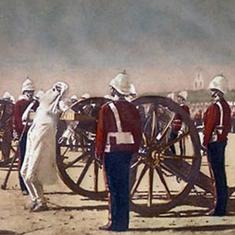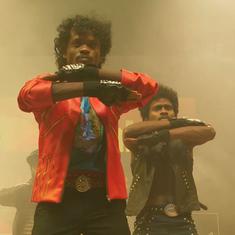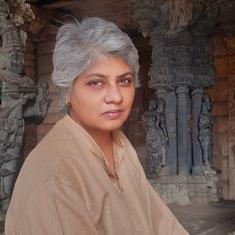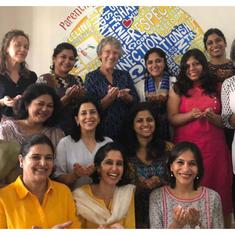The Big Story: Comeback
At a recent meeting of former Chief Election Commissioners with the current commissioners, a number of questions were raised about the image of the institution in India at the moment. The Indian Express reported that the Election Commission’s independent image, which has taken a bit of a beating over the last six months or so, needed to be protected and something would have to be done about it. “The questions raised about the Commission’s image were discussed,” SY Quraishi, former CEC, told the newspaper afterwards. “Irrespective of whether these questions are legitimate or not, the former Chief Election Commissioners felt that the Commission should try to get to the root of why this is happening and address it.”
The concerns do not come from out of the blue. Always an institution that came under pressure from the ruling party, the Election Commission has seemed especially pliable over the last six months. An indication came when the body chose to delink elections in Himachal Pradesh and Gujarat, which traditionally take place together, in a move that was seen as a ploy to give the Bharatiya Janata Party more time to get its electoral act together.
Later in the year, the EC also reversed its opinion of electoral bonds, a new, completely opaque system of political funding put forward by the current government, which the the EC had originally called a step back, only to change its mind and endorse the instrument. The EC’s decision to send its opinion in the office-of-profit case against Aam Aadmi Party Members of Legislative Assembly in Delhi without holding oral hearings on the merits of the complaint was even quashed by the Delhi High Court, which criticised the commission for violating the principles of natural justice.
Indeed, this story, of what is ostensibly an independent institution coming under the strain of demands from the central government appears to not be limited to just the Election Commission. Over the last few years, questions have been raised about Prime Minister Narendra Modi’s attempt to capture many more such bodies, whether it is the investigating agencies, the Reserve Bank of India, Parliament (through the abuse of the Money Bill), governors and, most prominently of late, the judiciary.
Of course, central pressure on independent institutions is not new. But the centralising nature of the Modi administration, coupled with his with-us-or-against-us attitude has meant a sharper attack on independence than India has seen in some time now. Worse, in many cases, few eminent voices have spoken up against these attacks. Take the role of the Reserve Bank of India during demonetisation. There were some questions about whether the central bank had even agreed to the note ban and even more queries about the complete lack of information emerging from the RBI after the deed had been done. Yet most of those questions came from the Opposition and, to a lesser extent, the media.
In the case of the judiciary, the institution best placed to withstand pressure, there has been a more visible battle, as the press conference by the four senior Supreme Court judges showed. At least there more voices have spoken up, but even those seem muted. Amid all this, it is heartening to hear that former election commissioners have noted the danger of the body losing either its independence or its independent image. As Quraishi pointed out, even if it hasn’t lost its indepedence, if people believe it is compromised, that itself is worrisome, especially as we enter a year that is bound to be full of fractious politicking ahead of General Elections due in 2019.
Hopefully, other institutions will take their cue from the former chief election commissioners, and think about the need for independence, both in action and image. One way of getting there might be to ask for clarity from the Supreme Court, which, in the aftermath of the Karnataka election where its intervention was key, is set to continue hearing the matter of how a Governor reacts to competing claims of government formation. The Court has a chance to lay down guidelines that might be all too necessary soon enough. It should not fritter that opportunity away.

Punditry
- “The truth is that the Assam quagmire will not be solved easily. Pulling a thread that tries to disentangle one part of the solution immediately puts strains on other parts of the problem. Nor can any political party claim either wisdom or full credibility in Assam,” writes Pratap Bhanu Mehta in the Indian Express.
- “The whole argument about a grand anti-BJP alliance fails to consider its short and long-term political costs. First of all, everyone aligning against the BJP could actually expand the support base of the BJP in the long run. The unity of all major parties (e.g RJD and JDU in Bihar, regional party and Congress in Odisha, Telangana and Andhra) tends to create a void as many voters of either party feel “orphaned”. This space vacated by the Opposition would result in a long-term consolidation of votes in favour of the BJP,” writes Yogendra Yadav in the Tribune.
- “The return of junior Gowda, Kumaraswamy as chief minister now (even with less than half the numbers of his partner Congress) tells us two things. One, that the power of the smaller parties with vote banks in their respective regions may be returning. You can see it in the SP and BSP combining and making Congress marginal in Uttar Pradesh and Sharad Pawar’s NCP seeing new possibilities in Maharashtra,” writes Shekhar Gupta in the Print.
Giggle
Modi Sarkar ‘loses control’ over fuel prices again! @mail_today cartoon #PetrolPrice pic.twitter.com/Wx9SxIjHSa
— Satish Acharya (@satishacharya) May 23, 2018
Don’t miss
Vinita Govindarajan’s two-part series on why the people of Thoothukudi are protesting the copper smelter in their town.
In Kumarredyapuram, the villagers alleged that pollutants from the Sterlite factory were causing breathing disorders, skin diseases, heart conditions and cancer, among other health problems. “It starts with throat irritation, then breathing difficulties and asthma, then we get fits and wheezing,” said Maheshwari, a 35-year-old resident. “Most women here also suffer from extreme pain during their menstrual cycle.”
“We are only now moving away from superstition and starting to understand the science behind diseases,” said S Sundaramoorthy, an active protestor in the village. “We are now realising that asthma and wheezing could be due to the environment we live in.”
The signs had always been there, though. “We could taste the pollutants in the water,” said Baby, a 28-year-old villager, adding that they have stopped using groundwater altogether. “We cannot even rinse our mouths with the water anymore.”










